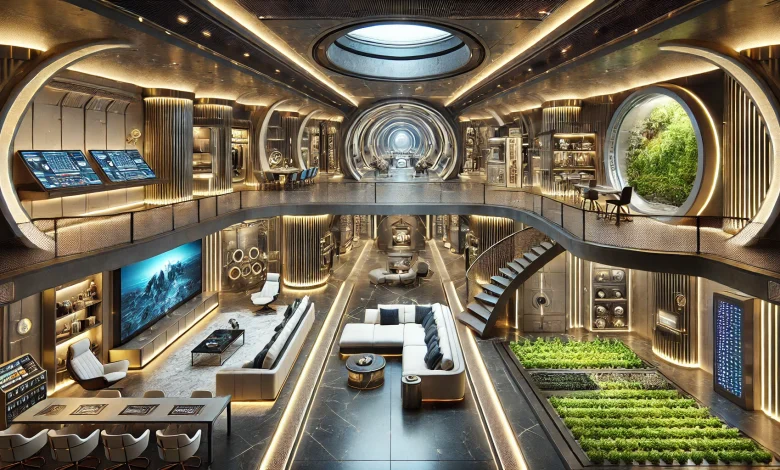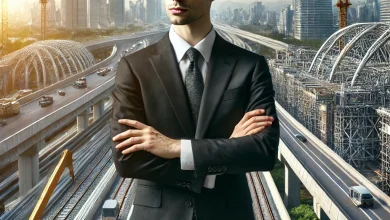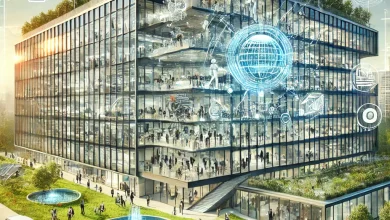15 Billionaires Built Bunkers: The Secret World of Ultra-Wealthy Survivalists

Table of Contents
In recent years, the term “15 billionaires built bunkers” has gained significant traction in both mainstream and niche media. While the world faces growing geopolitical tensions, environmental challenges, and economic instability, the ultra-wealthy are quietly preparing for a potential apocalypse. For many, bunkers are no longer just relics of the Cold War era; they are cutting-edge, state-of-the-art sanctuaries designed to provide safety, luxury, and sustainability in uncertain times.
But who are these billionaires, and why have they taken to building bunkers? In this first part of our in-depth exploration, we’ll examine the motivations driving the elite to invest in these modern fortresses and the remarkable features that set their survival plans apart.
The Rise of the Billionaire Bunker Trend
The idea that “15 billionaires built bunkers” might seem like a dystopian headline, but it reflects a growing trend among the world’s wealthiest individuals. Over the last decade, crises like the COVID-19 pandemic, climate change, and political unrest have spurred a shift in how billionaires approach personal security. Unlike average citizens who might prepare by stocking up on food or investing in alarm systems, billionaires think on a grander scale.
The emergence of high-tech, luxury bunkers represents a new era of preparedness. Companies specializing in bunker construction, such as Rising S Company and Vivos Group, have reported a dramatic uptick in demand from ultra-wealthy clients. These billionaires, hailing from industries such as technology, finance, and real estate, are taking no chances when it comes to safeguarding their families and fortunes.
Why Are Billionaires Building Bunkers?
1. Fear of Global Catastrophes
From nuclear war to pandemics, the fear of global-scale disasters is one of the primary reasons why billionaires are building bunkers. The idea is simple: in a world that seems increasingly unstable, having a secure and self-sufficient retreat could mean the difference between life and death. The phrase “15 billionaires built bunkers” captures this collective anxiety shared by the elite.
2. Economic Uncertainty
For many billionaires, economic instability poses a significant threat to their wealth and safety. The possibility of hyperinflation, market crashes, or resource shortages could lead to civil unrest, prompting the need for fortified shelters. Bunkers provide not only physical safety but also a psychological sense of security.
3. Technological Advancements in Bunker Design
Bunkers are no longer the cold, dark, and damp shelters of the past. The advancement of construction materials, renewable energy solutions, and smart technology has transformed bunkers into high-tech havens. Features such as air filtration systems, underground gardens, and geothermal heating make them not only survivable but also comfortable for extended periods.
4. A Status Symbol for the Ultra-Wealthy
While survival is the primary motivation, bunkers have also become a status symbol among billionaires. Owning a private jet or a yacht is impressive, but a fully equipped luxury bunker takes exclusivity to another level. When 15 billionaires built bunkers, it wasn’t just about survival—it was also about cementing their legacy as individuals prepared for any eventuality.
The Most Impressive Bunkers Built by Billionaires
When discussing the keyword “15 billionaires built bunkers,” it’s important to highlight some of the most fascinating examples of these survival structures. Each bunker is unique, reflecting the personality, wealth, and specific concerns of its owner.
1. The Silicon Valley Tech Mogul’s Fortress
One of the most talked-about billionaires in the bunker-building scene is a tech mogul from Silicon Valley. His bunker, located in New Zealand, is said to include a multi-level underground mansion equipped with solar panels, a private water reservoir, and biometric security systems. This billionaire sees the bunker not just as a refuge, but as a secondary home where he and his family can thrive in isolation if necessary.
2. The Wall Street Investor’s Luxury Retreat
A prominent Wall Street investor has reportedly constructed a bunker that doubles as a luxury retreat. Featuring an underground swimming pool, home theater, and wine cellar, the bunker blurs the line between survival and opulence. Its primary purpose is to provide security, but it also serves as a space for relaxation and recreation.
3. The Media Tycoon’s Remote Hideaway
A media tycoon known for his outspoken views has invested in a remote bunker designed to withstand everything from nuclear blasts to EMP attacks. The bunker includes a library of hard-copy books and an archival system to preserve media history, reflecting the owner’s passion for safeguarding knowledge.
The Features That Define Modern Bunkers
For the billionaires who have built bunkers, functionality and luxury go hand in hand. These shelters are meticulously designed to address both survival needs and lifestyle preferences.
1. Advanced Air Filtration Systems
To survive potential nuclear fallout or chemical attacks, billionaires’ bunkers are equipped with cutting-edge air filtration systems. These systems ensure clean, breathable air even in the most hostile environments.
2. Self-Sustaining Food Systems
Many modern bunkers feature hydroponic or aquaponic farming setups that allow residents to grow their own food. This not only reduces reliance on external supplies but also ensures a healthy diet during extended stays.
3. Renewable Energy Sources
Solar panels, wind turbines, and geothermal energy systems are common in luxury bunkers. These renewable energy sources provide consistent power while minimizing the environmental impact of the structure.
4. Unparalleled Security Measures
Security is a top priority for billionaire bunkers. Biometric scanners, bulletproof doors, and surveillance systems are standard features. Some even include armed guard posts or escape tunnels for added protection.
5. Aesthetic and Comfort Elements
Beyond functionality, these bunkers are designed to offer a high standard of living. High-end interiors, custom furnishings, and entertainment systems make life underground as comfortable as life above ground.
The Ethics of Billionaire Bunkers
When the phrase “15 billionaires built bunkers” circulates, it often sparks heated debates about wealth disparity and societal responsibility. For many, the construction of such bunkers highlights an unsettling truth: while the wealthy prepare for a worst-case scenario, the average person is left to face these challenges with far fewer resources.
1. Moral Obligations in Times of Crisis
Critics argue that billionaires building bunkers reflect a form of escapism. Instead of investing in global solutions to mitigate crises such as climate change, pandemics, or geopolitical conflicts, they opt to insulate themselves from the consequences. While philanthropy is common among billionaires, the act of bunker-building raises questions about their role in supporting the broader population during catastrophic events.
2. Economic and Environmental Impact
Constructing high-tech underground bunkers requires massive resources, including excavation, specialized materials, and advanced technology. The environmental footprint of such projects can be significant. For example, sourcing steel for reinforced structures or installing energy-intensive filtration systems can strain local ecosystems.
At the same time, the jobs and revenue generated by bunker construction companies contribute to niche economic growth. Companies like Rising S and Oppidum specialize in these projects, employing engineers, architects, and laborers to meet the growing demand.
How Bunkers Reflect Broader Wealth Inequality
The fact that 15 billionaires built bunkers serves as a stark reminder of global wealth inequality. While these individuals can afford to invest millions in their safety, billions of people worldwide struggle to secure basic necessities like food, water, and shelter.
1. The Gap in Preparedness
The disparity between billionaires and the general population is most evident in their ability to prepare for disasters. For instance, while the wealthy can install solar-powered bunkers with self-sustaining food systems, the average household might only be able to afford a few days’ worth of emergency supplies.
2. The Social Perception of Bunkers
Public opinion on billionaire bunkers is mixed. On one hand, many admire the ingenuity and forward-thinking approach of those preparing for worst-case scenarios. On the other hand, the secrecy and exclusivity of such projects often lead to criticism. People question whether these bunkers symbolize a broader lack of faith in humanity’s ability to collectively address global issues. 15 billionaires built bunkers
The Evolution of Bunker Design: From Survival to Luxury
When considering that 15 billionaires built bunkers, it’s impossible to ignore the incredible evolution of their designs. What started as purely survival-focused shelters has transformed into ultra-luxurious retreats. Below are some of the most cutting-edge trends in modern bunker architecture.
1. Customization to Fit Individual Needs
Unlike traditional bunkers, which were standardized and functional, today’s luxury shelters are fully customizable. Billionaires work closely with designers to create spaces that reflect their personal tastes and lifestyles. For example, a prominent tech billionaire’s bunker in New Zealand includes a Zen garden and meditation rooms, emphasizing mental well-being alongside physical survival. 15 billionaires built bunkers
2. Integration of AI and Smart Technology
Modern bunkers are equipped with artificial intelligence to automate essential functions. Smart systems regulate air quality, monitor energy usage, and even manage hydroponic gardens. This integration ensures efficiency and reduces the need for manual intervention. 15 billionaires built bunkers
3. Focus on Sustainability
Sustainability is a key feature of many billionaire bunkers. Renewable energy sources such as solar panels and wind turbines ensure minimal environmental impact. 15 billionaires built bunkers Additionally, waste recycling systems and water purification technologies allow these bunkers to remain self-sufficient for years.
4. Entertainment and Leisure Facilities
For the ultra-wealthy, bunkers aren’t just about survival—they’re also about maintaining a high quality of life. Features like indoor cinemas, personal gyms, and even underground spas ensure that life continues in comfort, even in a crisis. 15 billionaires built bunkers
Bunkers and the Future of Global Preparedness
The fact that 15 billionaires built bunkers has broader implications for global preparedness. As these shelters become more sophisticated, they highlight both the potential and limitations of disaster planning on a personal level.
1. The Role of Technology in Disaster Preparedness
The advanced technologies used in billionaire bunkers could eventually benefit society at large. For example, innovations in water purification, air filtration, and sustainable farming systems could be adapted for use in urban disaster relief centers or community shelters.
2. Inspiration for Urban Planning
Some experts believe that the concepts behind luxury bunkers could inspire more resilient urban designs. Underground living spaces, vertical farms, and self-sufficient energy systems could be incorporated into cities, making them better equipped to handle future challenges.
3. A Wake-Up Call for Global Action
While the idea of 15 billionaires building bunkers may seem exclusive, it also serves as a reminder of the urgency to address global issues collectively. Whether through climate action, public health initiatives, or conflict resolution, the lessons learned from the ultra-wealthy’s preparedness efforts could help guide broader societal strategies.
The Bunker Industry: A Multi-Million-Dollar Market
The keyword “15 billionaires built bunkers” is more than just a catchy phrase; it reflects an expanding industry designed to cater to the most affluent individuals on Earth. Companies that specialize in bunker construction are seeing record profits, with some earning millions in a single year. These companies not only provide shelter but offer complete packages, from design to long-term maintenance.
1. Bunker Design and Architecture Firms
The billion-dollar industry that caters to these survivalists is not just about basic construction; it’s about creating personalized, luxurious, and functional spaces that reflect the personalities and preferences of their owners. Firms like Vivos, Rising S, and Global Shield are among the leaders in this niche market.
These firms employ top-tier architects, engineers, and designers to craft bespoke bunkers that exceed conventional expectations. From luxury interiors to cutting-edge security systems, these firms provide clients with a custom design that suits their needs and desires. A bunker from these companies may include expansive underground homes, lavish bedrooms, art galleries, or even private museums.
2. The Role of Engineers in Bunker Construction
When it comes to bunker construction, the engineering process is far from simple. These underground shelters are built to withstand earthquakes, nuclear blasts, and other extreme disasters, meaning the materials and design must be precise.
Engineers working on billionaires’ bunkers use reinforced steel, blast-resistant concrete, and high-tech air filtration systems to ensure that the structure is safe for long-term habitation. The key to a successful bunker is its ability to maintain livability under extreme conditions, with proper ventilation, temperature control, and water supply systems.
3. Security Experts: Fortifying the Bunker
A large part of bunker construction involves implementing security features. Billionaires demand the highest level of protection, which includes advanced biometric systems, bulletproof glass, and access control mechanisms. Some bunkers even come with built-in defense systems, such as armed drones or the ability to disable external communication networks in the event of an attack.
Security experts design these systems with redundancy in mind. Everything from entry points to ventilation shafts is meticulously planned to ensure that the bunker remains secure under the most extreme circumstances.
The Psychological Factors Behind Building Bunkers
The trend of “15 billionaires built bunkers” isn’t purely about physical security; it’s also about peace of mind. For these ultra-wealthy individuals, the decision to invest millions in an underground sanctuary is often driven by psychological factors as much as by rational ones.
1. A Deep-rooted Fear of Global Collapse
While some may view the bunker-building trend as extreme or unnecessary, the psychological motivations behind these investments are deeply rooted in the uncertainty of the modern world. With concerns about the potential for nuclear war, global pandemics, and severe climate change, it’s no surprise that the ultra-wealthy are seeking a safe haven. The bunker represents a psychological escape from the unpredictability of the outside world—a place where one can weather a crisis without the constant worry of external threats.
2. Control Over One’s Future
Billionaires often desire control—whether over their businesses, finances, or lives. A bunker is the ultimate symbol of self-sufficiency. With everything from food production systems to private power grids, bunkers provide an unparalleled level of autonomy. In a time of global crisis, being able to rely solely on one’s own resources and systems gives individuals the power to shape their own destiny.
3. The Desire for Seclusion and Privacy
For some, the bunker serves as an escape from the public eye. Billionaires are often subject to intense scrutiny from the media, governments, and the public. The bunker offers an exclusive, private retreat away from the constant pressure of fame, business dealings, and societal expectations. It’s a place to find solitude, connect with family, and live in peace, far from prying eyes.
4. Legacy and Generational Wealth
Many billionaires are not just thinking about their own survival, but also the survival of their families and legacies. A well-equipped bunker can be passed down through generations, offering the next generation the same level of security and comfort in times of crisis. This aspect of bunker building aligns with the broader concept of generational wealth—ensuring that future family members have the resources to thrive, regardless of what happens in the world.
The Future of Billionaire Bunkers and the General Public’s Access to Survival Technology
As billionaires increasingly build bunkers, the technology developed for these elite shelters could eventually benefit the wider public. While it may seem like a distant dream, some of the technologies used in billionaire bunkers could trickle down to the general public over time, improving disaster preparedness for everyone.
1. Potential for Mass Adoption of Survival Technologies
Although bunkers are currently out of reach for most people, the technologies being developed for them could eventually become more affordable and accessible. Innovations in renewable energy, water filtration, and food production are becoming increasingly efficient and cost-effective. For instance, hydroponic farming systems, once exclusive to billionaires’ bunkers, are now being tested in urban areas to create sustainable food systems for cities.
Additionally, air filtration systems and home security technologies, which were once reserved for the ultra-wealthy, are being adopted by homeowners who are interested in creating more resilient living spaces. As demand for such technologies rises, they will likely become more mainstream, allowing the average person to invest in similar systems for their own homes.
2. A Shift in Public Perception: Preparing for the Unpredictable
While many see billionaires building bunkers as a form of elitism, others are beginning to recognize the value of being prepared for unexpected events. The increasing frequency of natural disasters, economic uncertainty, and public health crises has led many people to reconsider their own emergency preparedness strategies. As the wealth gap continues to grow, some may argue that learning from the technological advancements in billionaire bunkers could help create safer and more resilient communities worldwide.
3. The Democratization of Bunker Technology
As public interest in survival preparedness grows, new models of affordable shelters are emerging. Companies are now developing smaller, more compact, and cost-effective shelters that provide many of the same benefits as luxury bunkers, but at a fraction of the price. These shelters could serve as a starting point for individuals who are looking to increase their own personal security without investing millions in an underground mansion.
Conclusion: Billionaire Bunkers—A Symbol of the Future or the Elitism of Today?
The phrase “15 billionaires built bunkers” is more than just a statement about survivalism; it’s a reflection of the shifting priorities of the ultra-wealthy in the face of a rapidly changing and unpredictable world. As global challenges such as geopolitical instability, climate change, and pandemics grow, the wealthiest individuals are preparing for the worst-case scenario, often in ways that seem disconnected from the broader population.
Billionaire bunkers symbolize a growing divide between those who have the resources to shield themselves from global crises and those who do not. For some, this trend represents the ultimate expression of power and control, as these high-tech underground havens offer a sense of invulnerability. For others, the practice raises significant ethical concerns. With the wealth gap widening, many question whether it is appropriate for a select few to build luxurious shelters while the majority of the world’s population struggles to meet basic needs. 15 billionaires built bunkers
However, as technology advances and the demand for disaster preparedness grows, it is likely that the innovations pioneered by the world’s wealthiest individuals will eventually become accessible to the general public. The survival systems and technologies embedded in these luxury bunkers—such as renewable energy systems, water purification, and self-sustaining food production—could become more affordable and adaptable, making them available to everyday citizens. This shift may pave the way for broader societal changes in how we approach global security and personal preparedness. 15 billionaires built bunkers
At its core, the trend of “5 billionaires built bunkers” reflects a natural human instinct: the desire to protect oneself and loved ones from the unknown. 15 billionaires built bunkers As society faces new challenges, it is possible that the concept of private survival shelters will evolve into something that benefits not only the elite but the broader population. Whether this trend leads to greater technological advancement, more equitable preparedness, or further societal division remains to be seen.
Frequently Asked Questions (FAQ)
Q1: Why did billionaires start building bunkers?
Billionaires began building bunkers in response to growing global uncertainties, including fears of natural disasters, economic instability, pandemics, and geopolitical tensions. These shelters offer a way to protect themselves, their families, and their assets in the event of a catastrophic event. The ultra-wealthy can afford to invest in highly advanced, luxury bunkers that are self-sustaining and fortified against a range of potential threats.
Q2: What makes billionaire bunkers different from traditional survival shelters?
Billionaire bunkers are significantly more luxurious and technologically advanced than traditional survival shelters. These underground fortresses often include features such as air filtration systems, hydroponic gardens, renewable energy sources, biometric security, and even entertainment systems like home theaters or gyms. The level of customization and attention to comfort is far beyond what is typically found in regular survival shelters.
Q3: Are billionaire bunkers only for the ultra-wealthy?
While the most extravagant bunkers are designed for billionaires and the ultra-wealthy, the technologies used in these shelters may eventually become more accessible to the general public. For example, renewable energy systems, water filtration, and food production technologies, initially created for luxury bunkers, are increasingly available for everyday homes. This shift may lead to more people adopting similar survival technologies at a lower cost.
Q4: Do all billionaires build bunkers, or is it just a select few?
Not all billionaires build bunkers, but there is a growing trend among the wealthy to invest in these high-tech shelters. The desire for security, privacy, and preparedness has driven a small but notable group of billionaires to create their own underground fortresses. While the number of billionaires building bunkers is not precisely known, it is clear that this trend is gaining momentum among the elite. 15 billionaires built bunkers
Q5: How much does it cost to build a billionaire bunker?
The cost of building a luxury bunker can range from several million dollars to tens of millions, depending on the location, size, and features. A basic, functional bunker might cost around $3 million, while highly customized bunkers with all the latest technology and luxury features can cost upwards of $50 million or more. The price includes not only construction but also advanced security systems, sustainable energy solutions, and long-term maintenance.
Q6: Will billionaire bunkers impact society as a whole?
While billionaire bunkers may appear to be a private concern, they could have broader implications for society. The technologies used in these shelters—such as sustainable farming, air filtration, and renewable energy—could eventually be adapted for public use. This could lead to innovations in urban design and emergency preparedness for communities at large. However, the trend also raises concerns about widening wealth inequality and the ethical implications of such exclusive preparations in the face of global crises. 15 billionaires built bunkers
Q7: What are the ethical concerns surrounding billionaire bunkers?
The primary ethical concerns about billionaire bunkers stem from the growing disparity between the ultra-wealthy and the rest of the world. While these bunkers offer a safe haven for the elite, they highlight the fact that many people lack access to basic survival resources in times of crisis. Some argue that the money spent on luxury bunkers could be better used to address systemic issues such as poverty, healthcare, and climate change. 15 billionaires built bunkers
Q8: Can billionaire bunkers withstand natural disasters or a nuclear attack?
Yes, many billionaire bunkers are designed to withstand extreme events, including nuclear attacks, natural disasters, and other catastrophic situations. They are built using reinforced materials like blast-resistant concrete and steel and equipped with advanced filtration systems to ensure the safety of the occupants. These shelters are often designed to remain self-sustaining for extended periods, ensuring that occupants can survive even if external infrastructure collapses.
Q9: How are these bunkers maintained and stocked?
Billionaire bunkers are typically stocked with years’ worth of food, water, medical supplies, and other necessities. Many bunkers include hydroponic or aquaponic systems for growing food underground, as well as renewable energy sources like solar panels and wind turbines to provide electricity. Maintenance is often done on a regular basis to ensure that all systems are functional and that the bunker remains habitable in the long term.
Q10: What does the future hold for billionaire bunkers?
As the world faces new challenges, it is likely that the trend of billionaire bunkers will continue to grow. The technology developed for these shelters may become more mainstream, potentially benefiting the broader population. However, the future of these bunkers is also tied to societal changes. If more people begin to prioritize preparedness and self-sufficiency, we may see a shift in how survival technologies are integrated into urban life and public planning.



